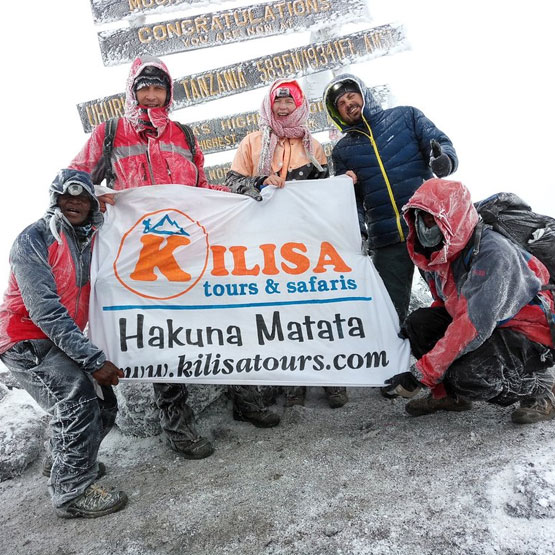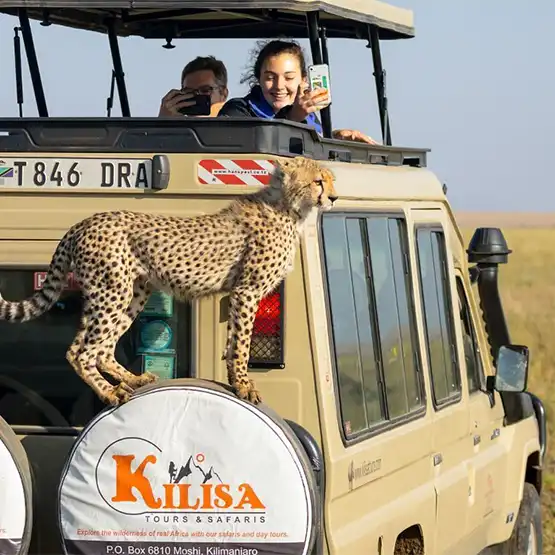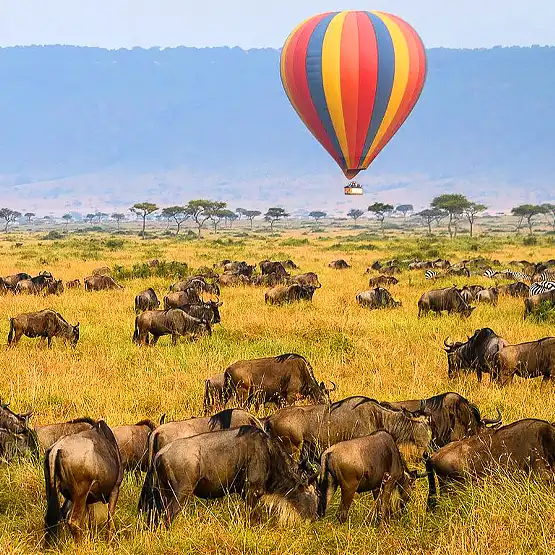Did you know that only about 50% of climbers successfully reach the summit of Mount Kilimanjaro? This stark statistic underscores the importance of thorough preparation and choosing the right tour operator. Booking a Kilimanjaro climbing tour requires more than just a sense of adventure; it demands careful planning and informed decisions.
First, decide on the best time of year to climb, considering both weather conditions and crowd levels. Then, finding a reputable tour operator is crucial—look for those with strong safety records and glowing reviews from previous climbers. With these steps, you’re well on your way to conquering Africa’s tallest peak, equipped with both knowledge and confidence.
- Research the best time to climb based on weather and crowd levels.
- Select a suitable route considering your experience and preferences.
- Choose a reputable tour company like Kilisa Tours for guided support.
- Understand the costs involved and what’s included in the package.
- Prepare physically with cardio, strength training, and practice hikes.
- Mental preparation is key; set goals and familiarize yourself with altitude sickness symptoms.
How to Book a Kilimanjaro Climbing Tour: A Step-by-Step Guide
Booking a Kilimanjaro climbing tour starts with researching the best time to climb. The mountain has different climate zones, and conditions can vary. January to March and June to October are popular times. Understanding the weather patterns can help you decide when to go. Planning ahead is crucial for a successful climb.
Next, choose the right route for your experience level. Kilimanjaro has several routes, each with different difficulty levels and scenery. For beginners, the Marangu route is often recommended. More experienced climbers might enjoy the challenge of the Lemosho route. Selecting the right route can enhance your climbing experience.
Once the route is chosen, find a reputable tour company like Kilisa Tours. This company is known for its safety record and customer satisfaction. When comparing companies, look at reviews and what’s included in the packages. Here is the article on what to expect from a Kilimanjaro tour company. Booking with a trusted operator can make all the difference.
Finally, prepare physically and mentally for the climb. Training should start at least a few months before your trip. Focus on cardio exercises, strength training, and hiking practice. Mental preparation is also key, as the climb can be challenging. According to the article, keeping a positive attitude greatly aids in reaching the summit.
Step 1: Research the Best Time to Climb
Researching the best time to climb Kilimanjaro is essential for a successful trip. The mountain experiences varying weather conditions throughout the year. January to March are generally colder with some snow, making it ideal for those who prefer a quieter trail. June to October is warmer and drier, which draws more climbers. This period is great for those who want a more social experience.
Each season has its pros and cons. The rainy seasons—April, May, and November—are less popular due to slippery trails. However, these periods offer lush, green scenery and fewer crowds. On the other hand, the dry seasons provide clearer skies and better views. Checking long-term weather forecasts can help you prepare for what lies ahead.
Elevation also plays a role in climate changes on Kilimanjaro. Temperatures can vary significantly between the base and the summit. Higher altitudes are always colder, even in the warmest months. Packing the right gear for varying conditions is crucial. Researching ahead ensures you have everything you need.
Consulting websites and tour operators can provide more detailed insights. Many climbers share their experiences online, offering valuable advice. Here is the article that goes into detail about the optimal times to climb Kilimanjaro. Trustworthy tour companies like Kilisa Tours can also offer guidance. Thorough research sets the stage for a safe and enjoyable climb.
Step 2: Choose the Right Route for Your Experience Level
Choosing the right route for your Kilimanjaro climb depends on your experience and fitness level. The Marangu route, known as the “Coca-Cola” route, is popular with beginners. It offers hut accommodations and a steady incline, making it less demanding. For a more scenic and challenging trek, the Machame route, or “Whiskey” route, is a favorite. This route has varied terrain and stunning views.
Experienced climbers might consider the Lemosho or Northern Circuit routes. These routes are longer, giving climbers more time to acclimatize. They offer fewer crowds and dramatic landscapes. The Rongai route, starting from the northern side, is another excellent option. It is less trafficked and shows a different facet of the mountain.
Each route has unique characteristics that cater to different preferences. Some routes focus on quicker ascents, while others emphasize scenic beauty and gradual climbs. Researching each route’s difficulty and features is crucial. This will help you match the route with your abilities. Ensuring a good fit can make your climb more enjoyable and successful.
Consult with tour operators like Kilisa Tours for expert advice on route selection. They can provide detailed information based on your profile. Here is the article that discusses the specifics of each route. Speaking with past climbers can also offer valuable insights. Choosing the right route is a key step in planning your adventure.
Step 3: Select a Reputable Tour Company like Kilisa Tours
Selecting a reputable tour company is a pivotal step in your Kilimanjaro climbing experience. Kilisa Tours is known for its exceptional service and safety standards. They offer a variety of climbing packages tailored to different skill levels. Checking reviews and testimonials can provide insights into their service quality. Happy customers often share their positive experiences.
It’s important to know what’s included in the tour package. Kilisa Tours covers essentials like permits, meals, and guides. They also provide necessary climbing gear and transportation. Knowing the inclusions can help you plan your budget effectively. Transparent pricing avoids any unpleasant surprises later.
Professional and experienced guides make a huge difference. Kilisa Tours employs knowledgeable guides who are trained in first aid and mountain safety. They understand the routes and challenges of Kilimanjaro. Good guides can offer motivation and advice throughout the climb. Their expertise ensures a rewarding climb.
Customer support is another factor to consider. Kilisa Tours offers responsive and helpful customer service. They assist with preparation tips, packing lists, and other queries. Reliable support can ease the planning process. A company that cares about its customers stands out.
Lastly, consider the environmental and social impact of the tour company. Kilisa Tours is committed to sustainable tourism practices. They protect natural resources and support local communities. Choosing an ethical company aligns your adventure with positive contributions. It’s a win-win for both you and the environment.
Step 4: Understand the Costs and What’s Included
Before booking your Kilimanjaro climb, it’s important to understand the costs involved. Prices can vary based on the route, tour company, and season. Typically, a climb can cost between $2,000 and $6,000. This includes permits, guides, and meals. Comparing packages helps you find the best value for your budget.
Knowing what’s included in the tour package is crucial. Most packages cover park fees, camping gear, and meals. Some also include transportation to and from the mountain. Detailed in the packages are often porters and guides. These elements ensure your climb is well-supported and safe.
Additional expenses may arise during your climb. Tipping your guides and porters is customary and should be budgeted for. You might also need to purchase personal gear like hiking boots and warm clothing. Some climbers opt for extra services like a portable toilet or internet access. Planning for these can help avoid unexpected costs.
- Permits and park fees
- Meals and camping equipment
- Guides and porters
- Transportation to and from the mountain
- Personal gear and optional services
Reviewing the fine print of each package is also essential. Some companies include acclimatization days, which can increase your chances of summit success. Other packages might offer emergency evacuation insurance. Kilisa Tours provides comprehensive packages with detailed inclusions. Understanding costs and inclusions ensures you’re fully prepared for your adventure.
Step 5: Prepare Physically and Mentally for the Climb
Preparing for a Kilimanjaro climb involves physical and mental readiness. Start your training at least three months in advance. Focus on building your cardiovascular endurance. Incorporate activities like running, swimming, and cycling. These will help strengthen your lungs and heart.
Hiking is also critical in your training regimen. Try to hike on varying terrains to simulate the mountain conditions. Carry a backpack to get used to the additional weight. Strength training for your legs and core can also be beneficial. This will ensure you have the stamina to tackle steep ascents.
Mental preparation is equally important. Climbing Kilimanjaro can be challenging and sometimes overwhelming. Develop a positive mindset by setting small, achievable goals. Visualization techniques can help. Picture yourself reaching different milestones during the climb.
Familiarize yourself with the symptoms and effects of altitude sickness. Knowing what to expect can help you stay calm. According to experts, rest and hydration are key in high altitudes. Talk to your doctor about preventative measures. Being mentally prepared can make your climb safer and more enjoyable.
- Start training three months in advance
- Incorporate cardio and strength exercises
- Practice hiking on varied terrains
- Develop a positive mindset and set small goals
- Learn about altitude sickness and its prevention
Finally, ensure you have all the necessary gear for the climb. Comfortable hiking boots and warm clothing are essential. Pack light but smart, bringing items that serve multiple purposes. Prepare yourself mentally for changing weather conditions. A well-prepared climber is a successful climber.
Key Considerations When Choosing a Kilimanjaro Tour
Choosing the right Kilimanjaro tour requires careful consideration of several factors. Start by examining the reputation of the tour company. Look for companies with strong customer reviews and safety records. A reputable company like Kilisa Tours can enhance your experience. They provide reliable service and support during your climb.
Review what’s included in the tour package. Essential elements usually cover permits, meals, accommodations, and guides. Some packages might also include transportation to and from the mountain. Knowing these details helps you plan effectively. Comprehensive packages often offer better value for money.
The experience level of the guides is another critical factor. Skilled guides not only lead the way but also ensure your safety and wellbeing. They should be knowledgeable about altitude sickness and first aid. Well-trained guides can make a significant difference in difficult situations. Their expertise enhances both safety and enjoyment.
Consider the group size when booking your tour. Smaller groups often mean more personalized attention from guides. Larger groups might offer more social interaction but can slow down progress on steep paths. Both options have their pros and cons—choose what suits you best. Personalized tours can be more rewarding.
- Company reputation and reviews
- Package inclusions (permits, meals, etc.)
- Experience level of guides
- Group size preferences
- Sustainability practices
Sustainability is an essential aspect of choosing a tour operator. Companies that practice eco-friendly tourism help preserve Kilimanjaro’s natural beauty. Check if they follow Leave No Trace principles and support local communities. Ethical companies contribute positively to both environment and society. This choice aligns with responsible tourism values.
Essential Gear for Climbing Kilimanjaro
Having the right gear is crucial for a successful Kilimanjaro climb. Comfortable, sturdy hiking boots are a must. They should be well-broken in to avoid blisters. Layered clothing is also important. Kilimanjaro’s climate varies from hot to cold, so layers help manage these changes.
Proper sleeping gear ensures a good night’s rest at high altitudes. A quality sleeping bag rated for sub-zero temperatures is essential. Sleeping pads add an extra layer of comfort and insulation. You’ll also need a reliable backpack. It should be large enough to carry your gear but comfortable to wear for long hours.
Other essential gear includes headlamps, trekking poles, and a hydration system. A headlamp is vital for early morning summit attempts. Trekking poles provide stability on uneven terrain. A hydration system like a CamelBak makes it easy to stay hydrated. Keeping hydrated is key to combating altitude sickness.
- Hiking boots and layered clothing
- Sub-zero sleeping bag and sleeping pads
- Reliable backpack
- Headlamp and trekking poles
- Hydration system
Personal items also play a role in your comfort and safety. High-SPF sunscreen and sunglasses protect against UV rays. Lip balm and moisturizers prevent dry skin at high altitudes. Bring a basic first-aid kit for minor injuries. Snacks and energy bars can keep your energy levels up. These items make the climb more manageable.
Understanding Altitude Sickness and Safety Measures
Altitude sickness is a common challenge when climbing Kilimanjaro. It occurs when your body struggles to adapt to the decreased oxygen levels at high altitudes. Symptoms include headaches, nausea, dizziness, and fatigue. Recognizing these signs early is important. Acting quickly can prevent severe complications.
Proper acclimatization is key to preventing altitude sickness. Gradually ascending the mountain allows your body to adjust. Many Kilimanjaro routes include rest days to help with acclimatization. Staying hydrated and well-nourished also aids this process. Fueling your body correctly helps it cope with the altitude.
Medication can be a preventive measure. Drugs like acetazolamide (Diamox) can help your body adjust to high altitude. Consult with your doctor before taking any medication. Some climbers find it beneficial, while others experience side effects. Always follow medical advice regarding its use.
Safety measures include traveling with experienced guides and carrying essential equipment. Guides are trained to recognize altitude sickness symptoms. They can make crucial decisions about descending if needed. Bringing a portable oxygen cylinder adds a layer of safety. It provides immediate relief in severe cases.
- Recognize early symptoms: headaches, nausea, dizziness
- Acclimatize slowly, including rest days
- Stay hydrated and well-nourished
- Consider preventive medication with doctor’s advice
- Travel with experienced guides
Being aware and prepared can make a big difference. Learn as much as you can about altitude sickness before your climb. The more you know, the better you can respond. Proper preparation and precaution are your best tools against this high-altitude challenge. Your safety is the top priority.
Post-Climb Recovery and Activities in Tanzania
After conquering Kilimanjaro, your body will need time to recover. Rest is essential to regain your strength. Hydrate well and focus on eating nutritious foods. Gentle exercises like walking can help your muscles relax. Give yourself a few days to adjust back to a normal routine.
Tanzania offers numerous activities for post-climb relaxation and exploration. A safari in the Serengeti National Park is a popular choice. It provides an opportunity to see the Big Five and other wildlife. Relaxing on the beaches of Zanzibar is another great option. The island’s crystal-clear waters and white sands are perfect for unwinding.
Cultural experiences in Tanzania are equally enriching. Visit the Maasai villages to learn about their traditions. Exploring the bustling local markets in Arusha offers a taste of Tanzanian life. Museums and historical sites in the region shed light on African heritage. These activities provide a deeper understanding of the country.
For adventure seekers, hiking in the Ngorongoro Crater is a must. It’s a natural wonder with diverse wildlife and stunning landscapes. Scuba diving and snorkeling in Zanzibar are excellent for water enthusiasts. These activities offer thrilling experiences after your climb. Tanzania has something for every type of traveler.
- Safaris in Serengeti National Park
- Beach relaxation in Zanzibar
- Visit Maasai villages
- Local markets exploration in Arusha
- Hiking in Ngorongoro Crater
- Scuba diving and snorkeling in Zanzibar
Combining relaxation with cultural and adventure activities enriches your Tanzanian visit. Plan your post-climb activities to make the most of your time. Whether you prefer leisure or exploration, Tanzania caters to all interests. Enjoy the diverse experiences this beautiful country offers. It’s the perfect end to your Kilimanjaro adventure.





